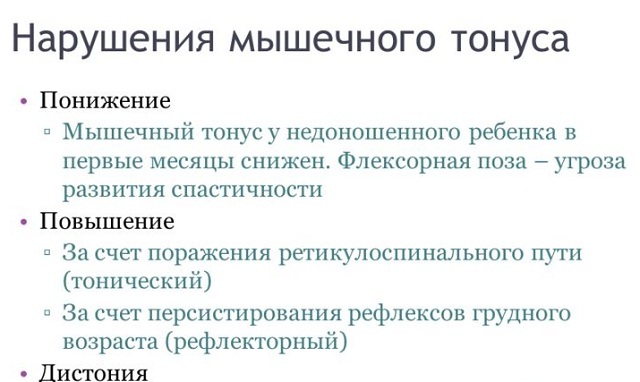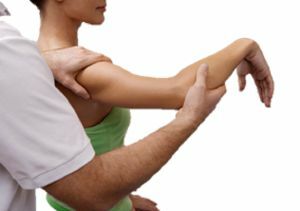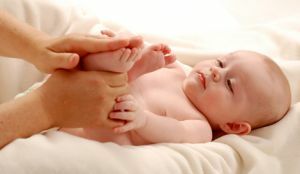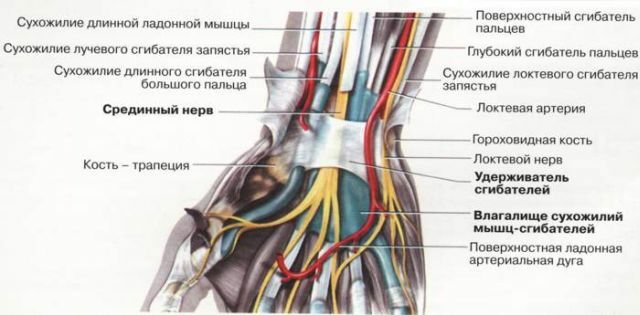 Muscle tone is the involuntary tension of our muscles. This process is permanent. Our consciousness and will do not control it.
Muscle tone is the involuntary tension of our muscles. This process is permanent. Our consciousness and will do not control it.
Did you ever wonder how muscles strain? What controls them? If the muscle tone is normal, then we do not notice it. This is our usual state, which does not cause any discomfort. Despite the fact that we do not attach importance to this, the tone exists.
This is an important characteristic of our muscular system. It affects the condition of all organs and systems. Without it, we can not move normally, walk and even stand.
An important function of the muscles of the skeleton is to maintain its working state. They should be fully prepared at any time, regardless of whether we sleep or are awake. And the reflex tonus of the muscular system helps us to maintain a certain position of our body.
Contents
- What is the norm and what is the deviation
- Hypertonus - about the causes and consequences of
- Why does hypertonus appear
- Types of muscle tone disorder
- Muscle tone in infants
- Diagnostic tests
- Therapy methods
What is the norm and what is the deviation of
What is the difference between tonicmuscle tension and normal? If the voltage is arbitrary, then a number of muscle fibers are involved simultaneously.
Imagine that every fiber is a lighted bulb. During an arbitrary stress, the entire muscle will look like a bright fireball. But in the case of tonic tension, it will already resemble the sky strewn with stars. Do you notice the difference?
In the second case, the fibers will not come into operation at once, but in turn: some strain, while others rest. Thanks to this economy, the fibers can work very long. In the distribution of tonic tension, the sensitivity of muscles and joints plays a crucial role.
As studies have shown, muscle tone can vary greatly from person to person. Even at one person at different moments of his life this indicator will change. For example, when we sleep, the tone is lowered. During mental or physical work, it will increase, and during rest and rest again decrease. With a reduced tone, working capacity is lost, but a high tone will interfere with productive work.
It is curious that muscle tone can affect the state of the human psyche. As it turned out, when the tone changes, our emotions also undergo changes. Decreasing it can calm a person and even sink into sleep. But it is difficult to control this indicator mentally.

Hypertonus - about the causes and consequences of
If the muscles are in a pathologically high tone, this can be signaled by such signs:
- their density increased;
- does not leave a sense of tension;
- you feel tightness;
- movements are constrained;
- you feel tired muscles;
- the rate of muscle growth slowed;
- often develop muscle spasms with acute pain.
There are two varieties of hypertonicity:
- Spasticity of .On different muscle groups, the tone is disturbed in different ways.
- Muscle rigidity .Tonus is equally high in all muscle groups.

Why hypertension occurs
Most often, this pathology is associated with a violation of the nervous system. It is from her that signals emerge, after which the muscles relax or strain. It is she who controls their tone. Increased muscle tone can appear for various reasons:
- cardiovascular diseases( with them the central nervous system is damaged);
- neurological pathology is congenital;
- because of a trauma, the brain or spinal cord was damaged;The human
- has demyelinating diseases.
And even the tone may depend on the psychological state. Our CNS often perceives all kinds of upheavals and stresses as a potential threat, and triggers a muscle tone. Slight influence on tone and weather conditions. In warm time the muscles are relaxed, and the cold provokes their tension.
Types of muscular tonus disorder
Muscle tonus disorders:
- Spasticity .A person feels the tension and density of the muscles, when performing movements, he feels their resistance. It
 can decrease with repetition of movements. In cerebral palsy, the tonus increases when trying to make an active movement and when going to the vertical position. Often, at the same time, contractures, deformations are formed, even emotional disturbances can be observed.
can decrease with repetition of movements. In cerebral palsy, the tonus increases when trying to make an active movement and when going to the vertical position. Often, at the same time, contractures, deformations are formed, even emotional disturbances can be observed. - Rigidity .The tone rises when performing passive movements. A person, unbending a limb, can feel the intermittence, the stretching seems to be stepped. This effect is called the "cogwheel" symptom.
- Hypotension .In this type of pathology, the muscles become flabby, sluggish, excessive extension is observed in the joints, there is no resistance during passive movements. The person notices that coordination of movements is disrupted. There are problems with balance, as well as emotional disturbances( for example, fear of heights).
- Dystonia .Individual muscles in the implementation of passive movements come to hypertension on the background of general hypotension. This phenomenon is often observed in children with cerebral palsy. They combine the hypertonicity of some muscles with the hypotension of others. Often this state appears after strong experiences, anxiety, feelings of fear, in unfamiliar surroundings, with sharp sounds and even if you touch the child with cold hands.
Muscle tone in infants
Muscular tone is seen in most newborns. At first it is a normal phenomenon. It is due to the fact that the baby after the embryo posture should get used to the new position of the body. Do not be scared if your baby is diagnosed with "muscular dystonia."
Tonus is an important characteristic of the state of the child's nervous system and its general condition. Violations of it can be a symptom of serious pathologies of the central nervous system, spinal cord and brain. For example, dystonia always accompanies increased rates of intracranial pressure.
 Disturbances in tone can cause delays in physical and mental development. Such babies later begin to crawl, sit, walk.
Disturbances in tone can cause delays in physical and mental development. Such babies later begin to crawl, sit, walk.
Therefore it is necessary to show the baby to the neurologist. A special group of risk is considered to be babies born before the term, "Caesarea", children with low weight.
Consequences of tonus disorders for children may be different:
- may deteriorate posture, gait, sometimes clubfoot;
- hypertonus can later go into hyperexcitability, the child will be inattentive, learn badly, begin to show aggression;
- hypotension leads to physical and psychological lethargy, apathy, hypodynamia, obesity, developmental lag.
Parents should be pricked up if:
- the hips of a newborn are bred more than 90 degrees, this is a symptom of a hypotone;
- diluting the hips of a child, you feel excessive resistance, it is a symptom of hypertonia;
- is a symptom of a tonus disorder - the unnatural position of the baby in the crib. In pathology, it can shrink into a lump or, conversely, spread out like a frog;
- the child badly eats, cries for no reason, throwing back the head;
- observed convulsions and fever;
- the kid does not play, does not smile.
If you still need a tone correction, then most often a therapeutic massage is prescribed. It is assigned to babies after a month and a half of  age.
age.
Drug therapy is infrequent. The specific treatment will depend on the causes that caused dystonia. Do not be afraid of massage.
The main thing is that it must be performed by an experienced and qualified children's masseur. A good professional massage normalizes muscle tone, improves blood circulation, stabilizes the work of the nervous system.
It is useful to make the child a simple charge:
- Stroke his back, legs of the handle. You can not touch the waist area.
- Massage the palms, heels, fingers on the legs and handles. Movements should not be strong and sharp.
- After three months the baby can do more complicated exercises. They can be chosen by a specialist in physiotherapy.
For the correction of muscle tone will be useful baths with herbs( calming collection, motherwort, chamomile), sea salt.
Diagnostic tests
To determine the state of the tone will help special diagnostic tests. The first examination of the baby is carried out in the hospital. Then the parents should show the baby to the orthopedist, neurologist every six months. Some manipulations for such diagnostics can be performed by the parents themselves:
- We raise the hips of .The kid lies on his back. You plant his thighs, without effort. The norm is moderate resistance. With a reduced tone, it is completely absent, and when it is too high, it is too strong. A healthy baby should raise the legs 45 degrees from each side.
- Sitting the baby by the handles .The kid lies on the back. Pull the crumbs behind your wrists as if you want to attach it. Normal - a slight resistance to extension in the elbows of the hands. With a lowered tone, there will be no resistance, with excessive - it is excessive.
- Reflex stepper and reflex support .While holding the mouse, put the crumb on the changing table. Stimulating to make a step, just tilt it forward. Norma - the child is standing and leaning on the entire foot, his toes are spread out on his legs. While tilting forward, the baby should not cross legs, imitates the process of walking. But after 1.5 months, this reflex is extinguished. But with hypertension it lasts longer. Symptoms of hypertension: preloaded fingers, crossed legs. Symptoms of muscle hypotension in infants: steps on excessively bent legs( you must keep crumbs under the armpits), squatting or refusing to walk.
Methods of therapy
As already mentioned, in cases of tonus disorders, professional medical massage is often prescribed, and less often - medical therapy. Most often, the neurologist prescribes a relaxing massage( 10 professional sessions, which are repeated six months later).

Also applies:
- special therapeutic gymnastics;
- electrophoresis;
- swimming;
- relaxing baths with herbs( sage, valerian, motherwort, chamomile, calming collection, needles) or sea salt;
- in more complex cases prescribed drugs( vascular drugs, nootropics, diuretics).
Remember that when you reach middle age, muscle tone may fall. It will not be superfluous to do medical gymnastics or moderate loads in the gym. Remember that the general state of your body, working capacity and emotional state directly depends on the muscle tone!


